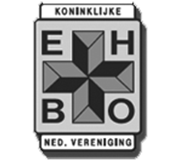Graphic Design from Around the World 3: Developing Countries

The third part of the series ‘Graphic Design from Around the World’ will feature graphic design from ‘developing countries’. There is no single definition to what a developing country is, and the list may vary greatly. Some developing countries may have high standards of living, while others vice versa. These countries are not as well represented in many aspects because of their so-called status–may it be politically, socially or culturally. Even in designs, most of the famous graphic designers hail from 1st world, or developed countries. There is much debate and criticism on the term ‘developing country’, but let us not discuss it in this article. The countries I will discuss here are from the list of the World Economic Outlook Report by the International Monetary Fund; and thus following the ‘Western model’ of economic development.
Turkey
Established in 1923, the new Turkish Empire wanted to separate itself from the old Ottoman Empire. Turkey is now borrowing political, cultural, fashion and technological ideas from the west. This meant that Turkish graphic design changed radically to meat the expectations from the west. The biggest change brought to this modernization is the change from Arabic script to the Latin alphabet. Among the most important names in Turkish graphic design is Ihap Hulusi Gorey until the 1950s. He was called the ‘king of graphic art’ because of his vast contributions in his field. Graphic design’s developments when the need for political posters, publications and leaflets rose. But by the end of the 70s the graphic designed practiced leaned to using it for the commercialization of the field. Now, the Turkish Society of Graphic Artists regularly awards designers in various fields such as posters, logos, book covers, branding, letterheads, web design, etc. Another positive success in Turkish graphic design is the gender equality; for Turkey is a country where many female designers have achieved great success.
Turkish Graphic Designers and their Works
Mehmet Gozetlik Mehmet Gozetik is an award-winning graphic designer hailing from Istanbul, Turkey. Most of his works are more inclined to inspirations from Western modern design, such as inspirations from technology and minimalism. His works are broad and varied: creative invitations, magazine ads, posters, packaging branding, corporate identity, typography, and so much more. 

From his works alone you can tell that Tamer Koseli is quite a character. His works look humorous, radiant, full of energy. Koseli is a Swiss born designer who is now based in Istanbul. He doesn’t shy away from using color to achieve the best results.
Ali Emre Dogramaci’s works are in two words, minimalist and enigmatic. His designs are conceptual in nature, they invite the viewers to think and engage.
For Sleepyheads Only
Typography for the Masses
Egypt
Egypt’s history of design go back for thousands of years, being one of the world’s oldest civilizations. Egypt brought to us the mummies, the great pyramids, the Great Sphinx of Giza. It is this great civilization that brought strong influences in the history of art. The first evidences of visual communication was in the form of Egyptian hieroglyphs, which were carved by the temple priests.
Book of the Dead, 1400 BC (Image from Parkland)
Hieroglyphs were the Egyptian’s only form of visual and written communication. The Egyptians are among the first to combine words and pictures into a whole. The whole picture looks polished, a unified whole. The Ancient Egyptian’s paintings are often graphic, with bold outlines and flat silhouettes. The paintings’ depictions are more symbolic than realistic. After the fall of the great empire, however, Egypt fell hard. For centuries, the country was under control under foreign occupation. By the 20th century, Egypt became a modern nation– and thus, they used modern design as their tool to visual expression for their own national identity as well as freedom from foreign oppression. New mediums are introduced, such as photography, printing, cinema, etc. Modern graphic design of Egypt showed a renewed national patrimony. They returned to the ancient Egyptian art that is most well-known to them, detaching themselves from any Arab, African, or other foreign influences. There is resistance to show their relations to their past foreign oppressors, but have since been open to new styles and technologies in the modern world.
The Best of Egyptian Graphic Design
Modern Egyptian designers like Islam Zayed revives Egyptian classical art, but using modern techniques and influences. Zayed plays with typography well–no one knows asymmetry and aesthetics like Zayed does. He is based in Cairo, Egypt.
Purgatory
Shoryuken
Human
Earth and Fire
Soha El Nassag In the western world, seeing female designers and artists hailing from the Middle East is so rare. This rarity makes their works a little bit more special, a ‘breath of fresh air’, because we seldom see and hear voices in the male-dominated region. Soha El Nassag’s works are strong but graceful, with a strong impact without being forceful. She is a graphic designer and focuses on branding, corporate identity and logos. 



Mohamed Nabil Labib I am always moved by foreign characters like Chinese alphabets and Middle Eastern scripts, for they always look more poetic than the boring latin alphabet. Labib likes to romance his audience by their captivating typography. And while I cannot read a word of it, it’s something to admire about. 


The Philippines
Philippine graphic design is characterized by rich colors, fine lines and festive elements. Philippines is indeed festive by heart, they know how to have a good time. Maybe a characteristic the country got from their forefathers after more than 300 years of Spanish occupation. A perfect example to describe the Philippines aesthetic is the Philippine jeepney. The Philippine jeepney has the heart of the Filipino, it is colorful, bright, funky but modest. It is a perfect example of Filipino ingenuity, that turned the American jeeps left after the World War II into a smart public transport invention.
Filipinos are optimistic in nature, they have a great sense of humor and they take on life lightly. This is ironic for a third world country riddled with problems of poverty and corruption. Philippine culture and design is sunny and vibrant, just like the climate. Because of the Philippines’ connection because of the American occupation during the early 1900s, Filipinos patronize American brands, clothing and design until this day. Probably the Philippines is more ‘western’ than its other Asian counterparts, in terms of popular culture and language.
The Brown Nation by Drew Europeo
Philippines are also heavily influenced by comic and graphic design. During the WWII the Americans also brought comics to the islands. Since then it is widely read, and everyone grew up reading comics. The pop art aesthetic can be seen in Philippine graphic design up to this day.
Portraits 2011 by Wham Bacabac
Philippine Graphic Designers & Works
Wham Bacabac Wham Bacabac is among my favorite Philippine graphic designers, because his works show much diversity. At the same time, his works are still characteristic of Philippine graphic design, such as his no shame use of colors and lines.
Brgy Tibay
Skin and Needles
Drew Europeo Drew Europeo’s works have a magnetic appeal to them. He still loves his colors and funky typography just like any Filipino artist, but he has a somewhat unique fascination to geometric shapes and figures. 

Building a Character
Vgrafiks Design + Branding Vgrafiks describe themselves as a social design enterprise that provides design services in marketing, branding, print, interactive, etc. As aforementioned, Philippine graphic design is rich in street art and graffiti influences; and these influences can be seen in some of Vgrafiks’ works.
Adobo Magazine Showcase
Make Something Beautiful
Vgrafiks is a genius when it comes to branding identity, such as their work for The FARM:
The FARM project
Thailand
Thailand is located in Southeast Asia, formerly known as the kingdom of Siam. Thailand is rich in culture, art and tradition. Since the recent years Thailand’s economy has greatly expounded, due to the influx of tourism in the recent years. Plus, Thailand is positioned to a positive direction, since the country has a liberal outlook towards its people, and no censorship, which is not common in many of Thailand’s neighboring countries. Thai artists and designers are able to express themselves in a variety of media such as graphic design, web design, painting, photography, installation, interactive media, etc. The center of modern graphic design is in the country’s capital Bangkok. Just like the capital, graphic design talent is diverse and exotic. Thai graphic design combines traditional Thai elements with techniques.
Image from Creative Roots
Chang Beer
Patterns are a common element in the works, as well as diversity in uses of color and texture. Despite that, Thai graphic design seems to shy away from using too much saturated colors as compared to its other Southeast asian neighbor, the Philippines. The main religion is Buddhism, thus visual art in the country was then mainly Buddhist. Graphic design is full of diverse textures and structure, and these elements are obviously inspired by the architecture of the Thai structures and temples.
Image from Nasida
Amazing Thai Graphic Design
Siam Ruay As seen in most of his works, Siam Ruay is a fan of keeping things simple. He likes to use elements minimally, and white space is common in his graphic design works. 


Tarin Yuangtrakul Tarin Yuangtrakul’s works are whimsical and pretty, with an oriental spirit of its own.
Thai Hanuman
Hope For
I am a Thai Graphic Designer Project
The project showcases excellent design and typographic work from talented graphic designers around Thailand. It’s a showcase of work from various talents, from tenured professionals, to amateurs and students. Despite their differences, one thing is common: they’re Thai with a deep love in graphic design. Here are just few of the photos, but you can check more at http://imtgd.org.
Thrissawan Phonglamjiak
Anan Trakarnsrisunun
Zood
Ruangtam Sammasanti
F.O.F.
Kongkij
Cuba
When you think of Cuba, the images that come into your mind are plenty: Golden beaches. Palm Trees. Casinos. Exotic women. Fidel Castro. Cuba was once a tiny little island that serves as a luxury playground for the Americans and Europeans who came in search of romance, gambling, latin music and beaches. This physically laid back but politically tumultuous environment will eventually influence what Cuban graphic design will be. The golden age of Cuban graphic design started in the 1965 and ended 10 years after, 1975. These 10 years are considered the most fruitful stage in the history of Cuban graphic design. Cuban graphic artists combined elements of various art styles such as art deco, Bauhaus and art nouveau with its own Cuban distinct style. Silkscreen was a popular medium for designers during its golden age–because of the function of being able to reproduce posters and designs, a necessity back then.
Che Guevara was a central figure in Cuban history, but this memorable poster of him is actually designed by Irish artist Jim Fitzpatrick.
Cuban graphic design is strong and powerful, still having its socialism influences from the past. The Cubans love the basic colors of red, yellow and black. The Revolution, after all, held a big impact in Cuban history and society. The revolution also influenced Cuban graphic design entirely. Propaganda is a popular theme among Cuban artists.
Cuban silk screen poster by Heriberto Echeveria (Photo from Lincoln Cushing)
Cuban sports poster by Jesus Fornjans 1970 (Image from Lincoln Cushing)
Since the Golden Age, Cuban graphic design has been struggling to recovery. New graphic designers cannot match the quality of works of the old masters, as several critiques would note. This is due to several problems; such as the development from screen printing to digital and web design–which some designers found hard to cope. Other problems include economic instability, resistance to modern technology and inconsistency of the new generation designers.
Amazing Cuban designers and their works
Rene Mederos We can’t talk about Cuban graphic design without mentioning Rene Mederos. Mederos’ choice of medium is silkscreen. His style is often nature elements, contoured surfaces, solid colors; and his works always have a political message to it. Rene Mederos was a huge name in the world of Cuban graphic design, and he influenced a whole generation of artists not only in Cuba but around the world.
Viet Nam will Win (Photo from ZPub)
Nixon Tearing out the Heart of Indochina (Photo from ZPub)
Photo from ZPub
Rene Azcuy Cardenas His specialty is designing movie posters. 
Besos Robados (Photo from Lincoln Cushing)
Eladio Rivadulla
Image from Cubarte
Image from Cubarte
Photo from Molossus
Conclusion
It makes you wonder: why is the graphic design of developing countries is more lively, vibrant and optimistic, as opposed to the minimalist, lifeless(sometimes almost robotic) and aloof design of the 1st world countries? I do not say which is better of course, but the contrast is stark. There is no such thing as a country more ‘developed’ and ‘richer’ or ‘developing’ and ‘poorer’ when it comes to design. Graphic design is, in a word, ‘international’. There are no boundaries set on how a 1st, 2nd or 3rd world country’s graphic design should look, and vice versa. They are all beautiful in their own unique way.
- Login om te reageren






















































